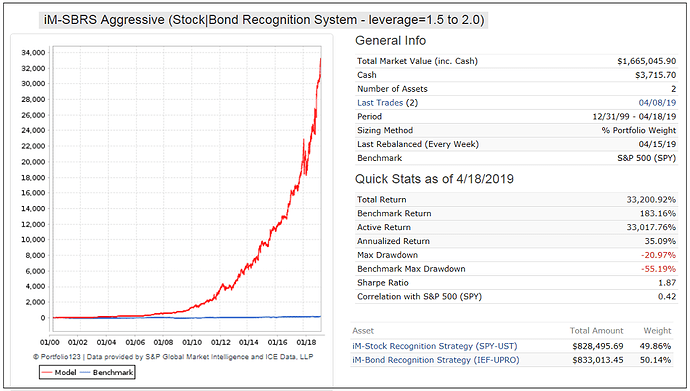Yuval,
I’ve read your cluster article, a great read. I’m planning to delve into this once I get the P123 themes sorted.
To add some context, let’s use the P123 QVGM rank system as an example. Let’s say the “optimum” ranking system weighting for the “all stocks” universe is 25%/25/25/25 for Quality, Value, Growth and Momentum. Each factor group (Q, V, G, M) has say 5-10 factors each.
Assume the P123 theme “population growth” is sensitive to “growth” factors, and we want to cater the above ranking system to the population growth universe. Overall the growth factors in the PG ranking system would have a higher weight given to growth factors. The weighting could then be 25/15/35/25 for example.
If you repeat this for each P123 theme, you end up 5 universes with 5 ranking systems.
I am trying to break out the outperforming components of the overall ranking system. Speaking purely in terms of rank performance in ventiles, some of the themes do better than “all stocks”. When I transfer over to a simulation however, I’ve yet to see that outperformance. I’ve tried different combinations of # of stocks, sell points, etc.
The stats listed in my original post are for sims. Here are my top performing ventiles for “all stocks” compared to each theme and the respective optimized ranking system and universe (Jan 1999 – today, 4 week rebalance):
All stocks: 39%
Macro: 39%
Population Growth: 44%
Special: 35%
Financial: 25%
Innovative: 44%
As noted in my initial post, if you create a sim for each of 5 themes, you can run as a book, but performance of the book is generally lower than if you just run a single ranking system on the “all stocks” universe.
For your first point:
“create a node in the ranking system that favors some industries over others, depending on how well they react to your system”
Is my example above of adjusting the growth over value what you’re referring to? Or are you adding a specific node for population growth?
"You want to invest most highly in those industries (or themes?) whose performance in your system exceeds their overall performance (in ranking system?). This may mean investing more in industries with poor past performance, which will lower your backtest results. "
By “investing most highly in those industries” above, are you referring to “industries” generically as “themes” as well, or industries within the theme?
The “all stocks” ranking system and sim takes the top performers of each theme, but uses no discretion. It could theoretically take all stocks from one theme at a given rebalance.
I would like to be able to test and control for the themes. “Special” for example produces the most volatile results in simulation and ranking performance, so I would like to limit this. But at the same time if I remove this theme from my “all stocks” (so “all stocks less special”) I achieve neither a higher return or less volatility.
Which leads to your second point.
“Second, develop individualized ranking systems for each theme/sector/cluster, and then, using Excel, combine those ranks with the overall rank of your system.”
Can you elaborate on this item, particularly what is being done in Excel? If we’ve developed individualized ranking systems for each theme as described above, I’m not quite sure what you mean by “combining those ranks with the overall rank of your system”. Is this not the same as using the “book” function to run 5 separate simulations (one per theme, with individualized ranking system and universe), investing in say the top 5-10 stocks of each (or at any other weighting per theme sim)?
And your last point:
“The closest I got to simulating it was to do the following. I ran nine simulations, one for each cluster, for the very top ranked stocks in each cluster according to my individualized ranking system. I then ran a simulation that bought and sold the stocks in those nine “portfolios.” I did the same for the not-quite-so-highly ranked stocks in each cluster and ran another simulation that bought and sold those stocks. Then, using formula weight rebalancing, in a new simulation, I assigned weights according to stocks whether they were in the top portfolio, the second portfolio, or neither (negative weights), and added to those weights another weight based on the rank position of my main ranking formula. The result was good, if a little imprecise.”
I will try this. For the common simulations that buy stocks of the 5 themes, I have a question/clarification on the “portfolio” buy command. I use portfolio(“macro”)=true etc for each simulation as 5 separate buy rule, however the sim is not buying any stocks. Any clues?
Thanks,
Ryan


